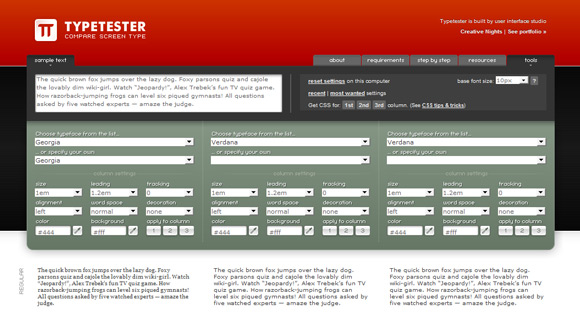The central, most telling question to ask a leader is, whom do you serve?
Some leaders will tell you, using a popular descriptor, that they aspire to be "servant leaders." The question still remains, however, a servant to whom: to yourself, to your group, or to society (to cite three of several options)?
Asking the question whom do you serve? is a powerful vector on which to build a useful typology of leadership. Based on this idea, I have constructed a six-level Purpose-Driven Model of Leadership informed by the work of Jean Piaget, Lawrence Kohlberg, and his colleague, Robert Kegan (see table 1). The answer to the question whom do you serve often reveals more about leaders than knowing their personality traits, level of achievement, or whether they were "transformational" or "transactional" leaders.
Level One: Sociopath
At the base of the model is the person who literally serves no one: the Sociopath. The Sociopath, afflicted with what the Diagnostic and Statistical Manual of Mental Disorders (DSM-III) describes as antisocial personality disorder, exhibits abnormally low empathy and destroys value, himself, and, ultimately, those who surround him as well. (I use the male pronoun because the vast majority of Sociopaths and psychopaths are male.) Fortunately, Sociopaths comprise less than 1 percent of the population. An excellent current example is Muammar Gaddafi, who is destroying his country, his tribe, his family, and, in time, himself. Indeed, he serves no one. The same was true of Adolf Hitler and Saddam Hussein.
Level Two: Opportunist
The second level is the leader who serves only himself or herself, often at the expense of others: the Opportunist. These are the people who always ask, "What's in it for me?" Their moral compass is guided primarily by the accumulation of wealth and power, all else be damned. Bernie Madoff, now in prison, is a poster boy for the Opportunists. While Madoff enjoyed the luxuries of a life of wealth and power, hundreds if not thousands of retirees saw their nest eggs evaporate because of their unwitting participation in a deliberately contrived Ponzi scheme that, in time, became the largest ($50 billion) in Wall Street history. By this measure, or in terms of the families brought to financial ruin, Madoff remains one of the modern world's greatest Opportunists. Also of this genre, although somewhat lesser known, is Jeffrey Skilling, the Enron CEO who sold off tens of millions of dollars of stock just before Enron filed for bankruptcy, claiming he had no knowledge of the scandal that would engulf his company. He was sentenced to 24 years and four months in prison.
Level Three: Chameleon
At the next level sits Chameleons. These are the "leaders" who bend with the wind and strive to please as many people as possible at all times. In some cases this could be the group they work with; in other cases, the regional or national electorate. It is difficult to find renowned corporate leaders who fit this category because in business, typically, the Chameleons are weeded out before they reach the top. The world of politics is another matter. Many politicians fall into this category. Those who follow presidential politics will remember Senator John Kerry (D-MA), who was pilloried as a "flip-flopper" after explaining a vote regarding the Iraq war: "I actually did vote for the [authorization bill] before I voted against it." In Florida, former governor Charlie Crist changed colors so often that it was difficult to know with precision where he stood on any given issue, from climate change to which party, if any, he really belonged to.
There is a natural cleavage between the model's first three levels described above and the next three levels. There is not much to celebrate about the first three levels, although certainly levels two and three abound in organizations. There's much more to admire in levels four, five, and six.
Level Four: Achiever
The level-four leader, the Achiever, fills the senior executive ranks. These leaders rarely fail to achieve their goals and often exceed sales quotas, create generous profits, and are frequent stars at merit-award dinners. The Achiever, to use Peter Drucker's felicitous phrase, is often a "monomaniac with a mission" and is focused, energetic, results-oriented, and highly prized by top management. Achievers pursue goals established by their bosses or by themselves, in a single-minded manner. Therein lies the Achilles' heel of Achievers: They drive toward a goal without giving much consideration to the broader mission. Former Hewlett-Packard CEO Mark Hurd is an excellent example of a level-four leader. Under his watch HP's stock price more than doubled, but he decimated the infrastructure and intellectual seed corn (R&D) of the company to do so. By simply cutting R&D to a level of about 2.5 percent of revenue, down from 6 percent during the 1990s, the Carly Fiorina/Mark Hurd team "saved" HP about $4 billion—about the equivalent of half the profits earned during Hurd's last year. HP's once formidable technological and product strength was slowly sapped away. When I asked Dave Packard in the early 1980s what accounted for HP's extraordinary run he modestly replied, "I guess we found a way to make a better product." Where are those better products today? Referring to one of HP's most visible new product initiatives, the TouchPad, a late entry into the iPad dominated tablet space, a senior HP executive reportedly told the Wall Street Journal, "We know we're the fifth man in a four-man race." In their drive towards a goal, Achievers often substitute the needs of the whole with their personal striving to succeed.
Level Five: Builder
The level-five leader, the Builder, strives not to reach a goal but to build an institution. Builders are legendary leaders such as IBM's Tom Watson Jr., GM's Alfred P. Sloan, and Harpo's Oprah Winfrey. These people serve their institutions by managing for the long term and not allowing themselves to be seduced by the twin mirages of short-term profit or stock market valuations. They have a grand vision for the future of their organizations, and they infect others with their energy, enthusiasm, and integrity. These are the leaders we write books about, study, try to understand, and lionize.
Level Six: Transcendent
Builders are few and far between, but there is an even rarer type of leader who transcends the Builder: the Transcendent. Level-six leaders transcend their political party, their ethnic or racial group, and even their institutions. They focus on how to benefit all of society. These are "global citizens," in the words of Howard Gardner's recent book, Truth, Beauty, and Goodness Reframed, who watch out not only for numero uno but for the wider public as well. There is no better example of what it really takes to be a Transcendent than the first black president of South Africa, Nelson Mandela. He was able to soar above hatred for his white jailers, the political tug of the African National Congress, the pull of his racial and tribal group, and the rejection by the Afrikaners to build a South Africa for all South Africans. Now in his 90s, he is perhaps the world's greatest living leader.
Like Martin Luther King Jr., Mandela wanted people to be judged by the "content of their character rather than the color of their skin." The Dalai Lama, another Transcendent, told me that the first thing he does in the morning after he finishes his prayers is to ask himself, "How can I help to make the world better today?" Imagine if our senior political and business leaders started their day by asking that question and acting on the answer.
Portfolio mix
No one is a pure Transcendent or a pure Opportunist. Rather, we are all a portfolio of the different types with one type being dominant. Even the Dalai Lama has to deal with the pull of his emotions when he makes decisions. And Madoff did his best to shield his wife and sons when he confessed his grand scheme to the FBI.
Figure 1 graphically illustrates what the portfolio of levels might look like for a 35-year-old executive. This picture, however, is not static. Man is capable, though not always assured, of continuing moral development. The sense or the meaning we give to our life at 60 may be considerably different than how we see life at 30.
The levels we propose, though not linear, are in a general way a path to what Erik Erickson calls generativity and integrity. Helping leaders to find their own path and follow it should be the ultimate goal of a leadership development program.



About the author
Modesto A. Maidique is a visiting professor at Harvard Business School. He is Professor of Management and executive director of the Center for Leadership in the College of Business Administration at Florida International University. He developed and serves as director of the university's Leading Decisions Executive Leadership Development Program.

















 Back in September 2009, I got
Back in September 2009, I got 





